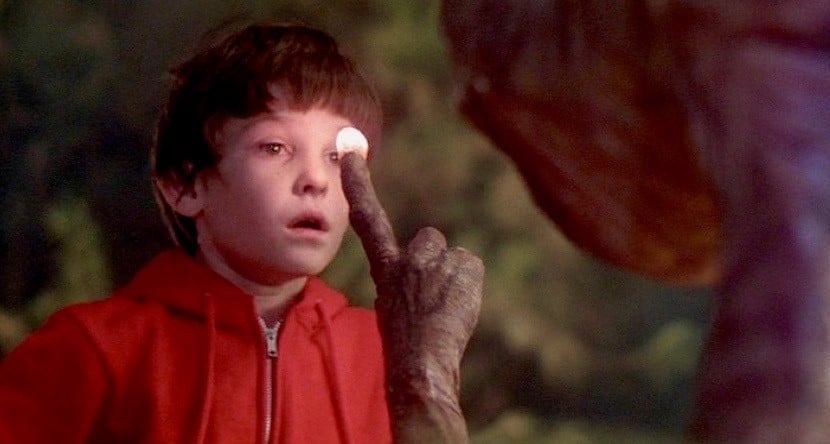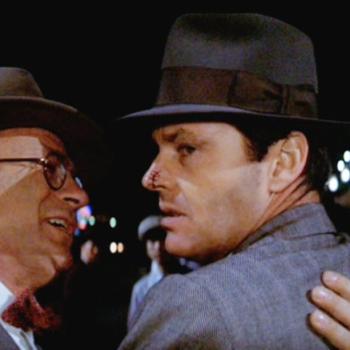
I’m not sure what specifically is driving me to write about this film this week. It may just be because I really loved watching Pixar’s ELIO (apparently I was the only one). I guess using adorable aliens as a touchstone for describing how love really can stretch across stars and galaxies, it just works.
Anyways, “E.T.” …
Spielberg’s 1982 film follows a benevolent alien who is accidentally left behind on Earth and befriended by a ten-year-old boy. To give you a sense of what kind of movie this is … while living with Elliot, E.T. learns about physical injuries, like when Elliot gets a cut on his finger. E.T. learns that this is called “ouch!” (This is also when we find out that E.T. can use his alien magic to heal wounds.) At the very end, when E.T. sees Elliot crying as he’s saying goodbye, he knows something is “ouch!” But instead of using his magic glowing finger to try healing him, E.T. simply points to Elliot’s head and assures him “I’ll be right here.” It is a movie that speaks directly to the inherent child within each of us.
Connecting this back to this site’s theme on divinity within film, Christ asks that each of us become as a little child if we are to enter the kingdom of heaven. It’s a common thread across The Bible, and this begs the question of why. I was actually hosting a Sunday School discussion on this same idea very recently, and one of the questions I posed to my congregation was what exactly it is about children that we would describe as “godly?”
One of the brethren in the class made the note about how when a kid sees someone who’s fallen down at the playground, their first impulse is to help them up. By comparison, when adults see a coworker who’s struggling, their first impulse is relief. “Thank goodness someone’s lower on the totem pole than me.” An idea that we landed on that I really liked had to do with human beings losing something when they hit that age where they suddenly have to view each other as competition. This obviously happens when people enter the workforce, but this can start much younger than that.
And this is where something like “E.T.” really starts to prove its value. Movies like this remind us just how unusual it is for a person to go the other way and approach situations with the kind of tenderness that Elliot shows with E.T., and also what a powerful thing that can be in practice. (There’s something to this film that is vaguely analogous to what we discussed with A Perfect World, where a child’s innocence is enough to briefly turn an escaped convict into a good dad for a day or two.) Hence, E.T. has all sorts of attributes that carry mythical properties–bringing life back to wilting flowers, making his finger glow, levitating things with his mind. These all reveal themselves as Elliot approaches E.T. with that eye for childlike innocence.
At the center of this is Elliot’s willingness to embrace this foreign entity because he sees this displaced creature as someone who needs a home. This kind of charity comes naturally to someone like Elliot, who is also kind of an overlooked player in his environment (#middlechildproblems). He does not view this foreign entity as a potential threat or wonder what the cost of assisting him might be; he sees him first as a friend, and then someone who needs help.
But this is still a leap for Elliot because E.T. is also kinda freaky if you don’t know upfront that he’s not here to invade earth. The first thirtyish minutes of the film feel vaguely like a horror movie. It’s not totally clear at first whether this walking space potato has sinister intentions. Overcoming that requires a special kind of bravery, something that the adults in their hazmat suits do not possess. And it’s for that reason that Elliot is able to experience this grand adventure with this super-powered alien.
Childlike innocence is often discussed as something fragile and not fit for this world, yet judging by how ingrained something like “E.T.” is into our cultural consciousness, and for how many spiritual remakes it inspires, the world sure does seem to rely on it.














